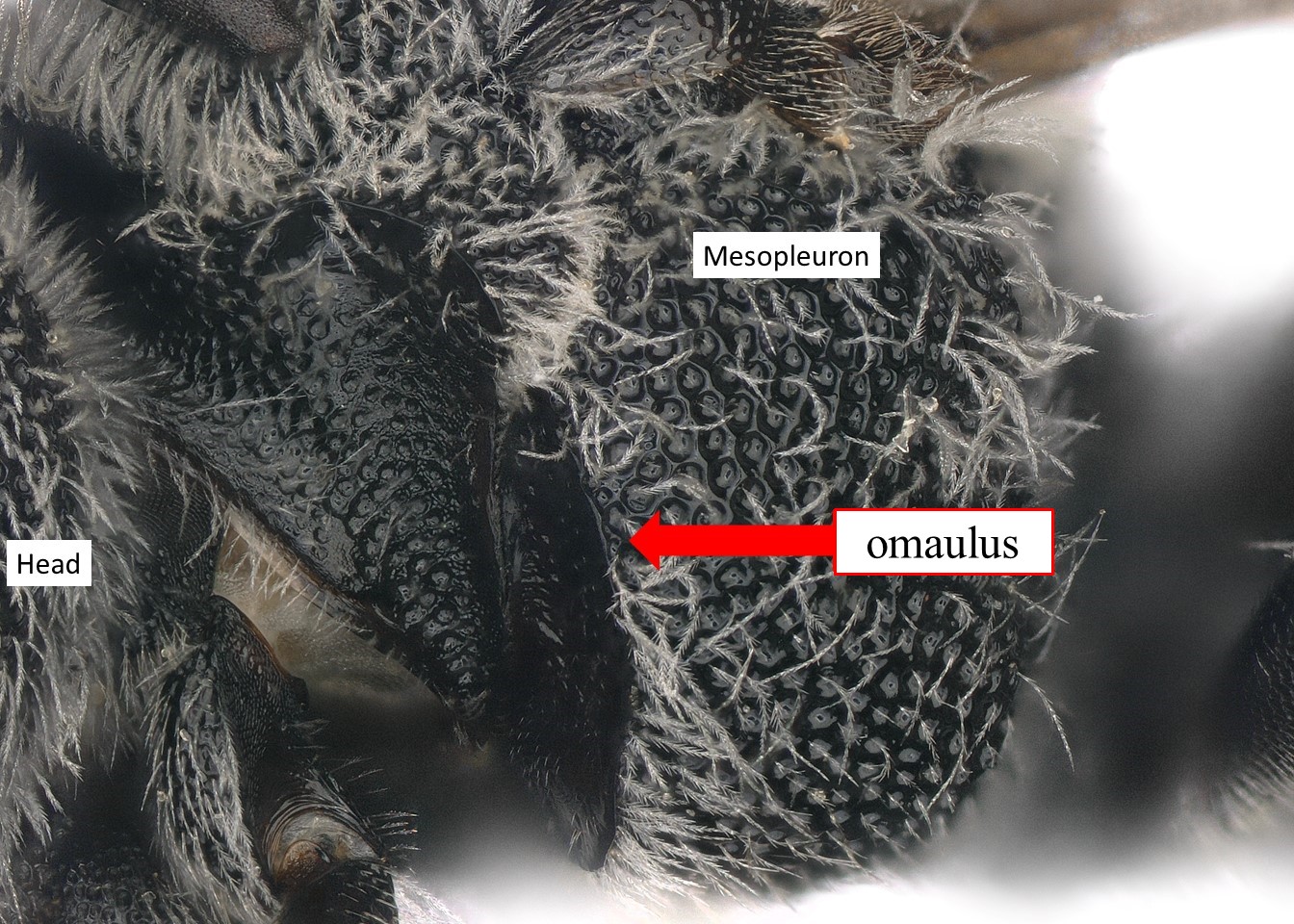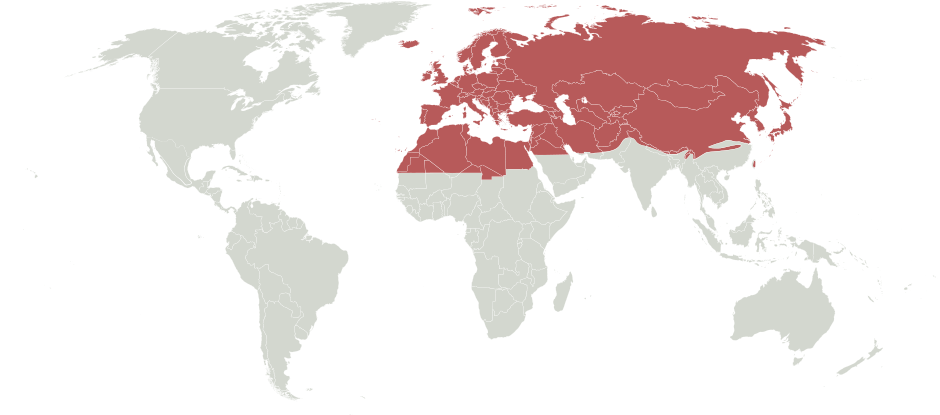Family: Megachilidae
Subfamily: Megachilinae
Tribe: Anthidiini
Genus: Anthidium Fabricius, 1804
Subgenus: Gulanthidium Pasteels, 1969
Common name: none
Anthidium (Gulanthidium) are robust, elongate bees which may have black and yellow markings or be predominantly yellow (Michener 2007Michener 2007:
Michener, C.D. 2007. The Bees of the World (2nd ed.). Johns Hopkins University Press, Baltimore and London, 953 pp.). They range in body length from 8.5–12 mm.
(modified from Michener 2007Michener 2007:
Michener, C.D. 2007. The Bees of the World (2nd ed.). Johns Hopkins University Press, Baltimore and London, 953 pp.)
 carinatecarinate:
carinatecarinate: is rounded or with a small median emarginationemargination:
is rounded or with a small median emarginationemargination:Anthidium (Gulanthidium) may be confused with bees within the subgenus A. (Severanthidium) due to the carinatecarinate:
having keels or carinae
omaulus, scutellumscutellum:
shield shaped plate behind scutum, hind tibiatibia:
the segment of the leg, between the femur and the tarsus, and hind basitarsusbasitarsus:
the segment of the tarsus that is the nearest to the body of the bee, usually the largest of all the tarsal segments (Michener 2007Michener 2007:
Michener, C.D. 2007. The Bees of the World (2nd ed.). Johns Hopkins University Press, Baltimore and London, 953 pp.). However, A. (Gulanthidium) can be differentiated from A. (Severanthidium) by the shape of the posterior margin of the scutellumscutellum:
shield shaped plate behind scutum. Further, the eyes of A. (Severanthidium) converge strongly below, which differs from A. (Gulanthidium), whose eyes only slightly converge below (Michener 2007Michener 2007:
Michener, C.D. 2007. The Bees of the World (2nd ed.). Johns Hopkins University Press, Baltimore and London, 953 pp.).
Anthidium anguliventre are specialists on Cardueae (Müller 1996); however, they have also been observed visiting Centaurea sp. (Asteraceae) and Vitex agnus-castus (Lamiaceae) (Falamarzi et al. 2017Falamarzi et al. 2017:
Falamarzi, S., B. Habibpour, M.S. Mossadegh, and A. Monfared. 2017. Species inventory of Megachilidae (Hymenoptera: Apoidea) in south of Fars province, Iran. Entomofauna 38: 89ndash;104.). Floral associations for A. eremicum and A. rotundum are not known.
Nesting behavior is unknown.
Anthidium (Gulanthidium) consists of three species: A. anguliventre, A. eremicum, and A. rotundum (Michener 2007Michener 2007:
Michener, C.D. 2007. The Bees of the World (2nd ed.). Johns Hopkins University Press, Baltimore and London, 953 pp.; Discover Life 2018Discover Life 2018:
Discover Life. 2018. Anthidium (Gulanthidium) . Discover Life. https://www.discoverlife.org/mp/20p?see=Gulanthidiumamp;name=Anthidiumamp;flags=subgenus:amp;mobile=1). None are known to occur in the U.S. or Canada.
There are no known invasives.
Anthidium (Gulanthidium) occur from Israel to Turkey, Iran, Oman, and Pakistan (Michener 2007Michener 2007:
Michener, C.D. 2007. The Bees of the World (2nd ed.). Johns Hopkins University Press, Baltimore and London, 953 pp.).

Distribution map generated by Discover Life -- click on map for details, credits, and terms of use.
Discover Life. 2018. Anthidium (Gulanthidium). Discover Life. http://www.discoverlife.org/mp/20p?see=Gulanthidium&name=Anthidium&flags=subgenus:&mobile=1
Falamarzi, S., B. Habibpour, M.S. Mossadegh, and A. Monfared. 2017. Species inventory of Megachilidae (Hymenoptera: Apoidea) in south of Fars province, Iran. Entomofauna 38: 89-104.
Michener, C.D. 2007. The Bees of the World (2nd ed.). Johns Hopkins University Press, Baltimore and London, 953 pp.
Muller, A. 1996. Host plant specialization in western PalearcticPalearctic:
the largest biogeographic region; consists of Europe, Asia north of the Himalaya foothills, Northern Africa, and the northern and central parts of the Arabian Peninsula anthidiine bees. Ecological Monographs 66: 235-257.
anthidiine bees. Ecological Monographs 66: 235-257.